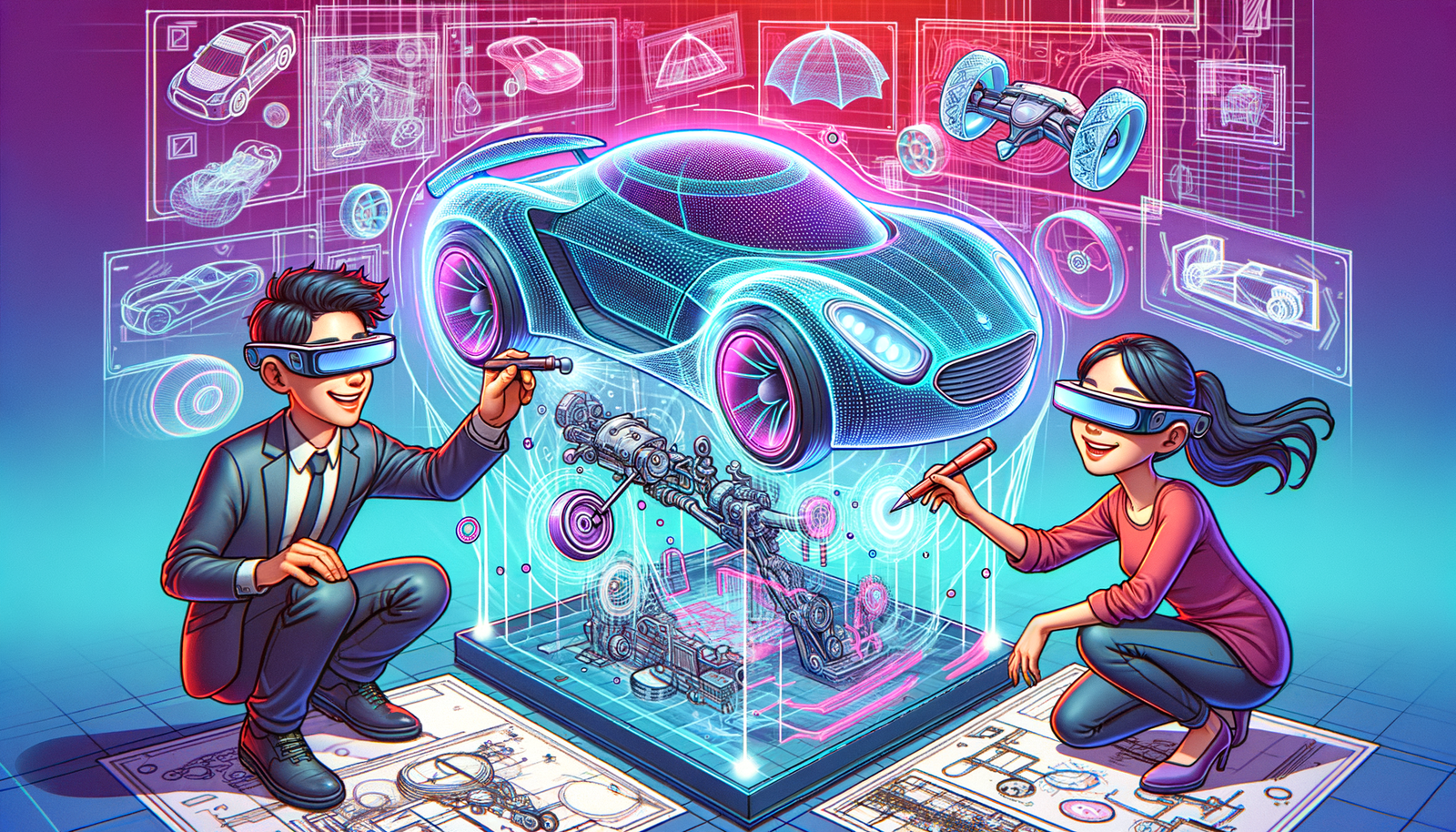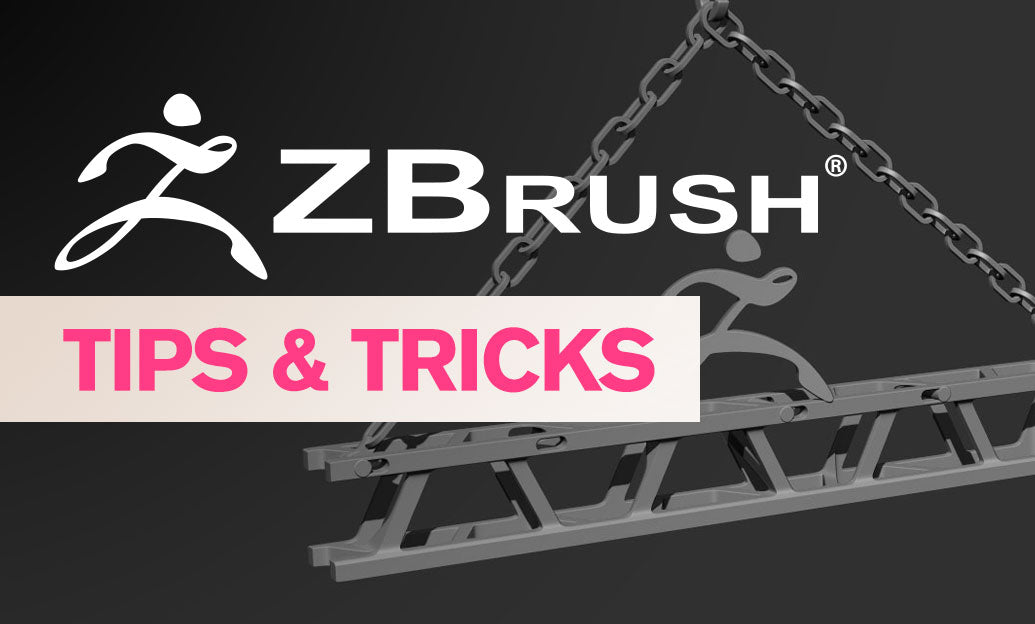Your Cart is Empty
Customer Testimonials
-
"Great customer service. The folks at Novedge were super helpful in navigating a somewhat complicated order including software upgrades and serial numbers in various stages of inactivity. They were friendly and helpful throughout the process.."
Ruben Ruckmark
"Quick & very helpful. We have been using Novedge for years and are very happy with their quick service when we need to make a purchase and excellent support resolving any issues."
Will Woodson
"Scott is the best. He reminds me about subscriptions dates, guides me in the correct direction for updates. He always responds promptly to me. He is literally the reason I continue to work with Novedge and will do so in the future."
Edward Mchugh
"Calvin Lok is “the man”. After my purchase of Sketchup 2021, he called me and provided step-by-step instructions to ease me through difficulties I was having with the setup of my new software."
Mike Borzage
Augmented Reality's Transformative Impact on Design Prototyping
May 10, 2025 9 min read


Understanding the Role of Augmented Reality in Design Prototyping
Evolution of AR Prototyping Tools and Their Foundational Concepts
The landscape of design has undergone a radical transformation over the decades, yet none of these changes have been as compelling as the advent of augmented reality in design prototyping. Historically, design professionals relied heavily on two-dimensional blueprints and physical models to visualize their ideas before committing to final production. The emergence of AR prototyping tools promises a shift in thinking by integrating digital content with real-world contexts to create immersive experiences that are remarkably lifelike. In the early days of AR development, basic overlays of digital information on tangible objects were considered a novelty, but over time these tools have matured into robust software solutions that enable real-time interactive evaluation of design concepts. Designers and engineers are now able to interact with virtual prototypes as if they were physical artifacts, exploring various dimensions, scale, and aesthetics with a level of engagement that was once unimaginable. This evolution has been bolstered by improved hardware performance, increased sensor fidelity, and more sophisticated software algorithms that facilitate the natural blending of digital and physical realms. Consequently, AR technologies are rapidly becoming integral for early-stage design validation, allowing stakeholders to identify design flaws, evaluate ergonomic factors, and explore stylistic variations within a simulated environment, ultimately leading to faster iterations and more precise product outcomes. The integration of these advanced techniques has redefined the traditional prototyping cycle, transforming passive visualization into dynamic exploration, and setting a new benchmark for design excellence.
Differentiating Traditional Visualizations from AR-Enabled Design Validation
Traditional design visualization methods, while effective in their time, often suffered from a lack of immersion and the inability to provide contextual feedback within actual use environments. Unlike static renderings or even interactive 3D models on a computer screen, augmented reality now invites designers to immerse themselves in a fully interactive world where traditional visualizations are replaced by a living, breathing model that can be manipulated in real-time. This AR-enabled approach brings considerable benefits, such as the ability to analyze the design’s performance in situ, thereby revealing critical insights about spatial relationships, material properties, and installation challenges that are often overlooked in conventional workflows. In this progressive paradigm, stakeholders are no longer passive observers but become active participants in the design dialogue, engaging with virtual prototypes as if they were tangible objects. This interactivity allows designers to simulate various usage scenarios, assess ergonomics in a physically realistic manner, and even conduct virtual walkthroughs in architectural design. The detailed feedback garnered from these immersive sessions serves as a powerful catalyst for refining design decisions early in the development process, ultimately reducing costly revisions later on in the production cycle. By integrating sensors, machine learning, and advanced graphics, AR tools transform the concept into a testable, interactive model that enhances both understanding and innovation.
The Rising Importance of Immersive Technologies in Modern Design Software
The increasing reliance on immersive technologies in design software signifies an essential milestone in the journey towards more efficient and informed design processes. Augmented reality stands out as a transformative tool that has the potential to redefine how designers evaluate form, function, and usability. As emerging trends continue to blur the line between physical prototypes and digital models, AR becomes indispensable by permitting real-time, high fidelity interactions that were previously unattainable. The current integration of immersive technologies is characterized by sensor-driven analysis, dynamic graphic display, and real-time correction feedback, all of which form the backbone of advanced design prototyping workflows. This evolution has spurred the adoption of AR in contexts spanning industrial design, consumer electronics, and even large-scale architectural projects. By virtue of its unique capability to overlay digital artifacts onto actual physical environments, AR delivers contextual validation that not only accelerates the decision-making process but also enhances the overall precision of the final product. Moreover, the ability to interact with virtual prototypes within their intended real-world settings provides critical insights into potential design oversights, thus ensuring designs are both aesthetically pleasing and functionally robust. This level of in-depth assessment fosters a collaborative environment where designers, engineers, and clients can interact with the prototype simultaneously, forging a shared understanding that drives improved outcomes and reflects the growing importance of immersive technologies.
Key Features and Capabilities of AR Prototyping Tools
Real-Time Interactive Model Manipulation and Seamless CAD Integration
One of the cornerstone advancements that has propelled AR prototyping into mainstream usage is the ability to manipulate models in real-time. With the incorporation of real-time interactive model manipulation, designers can adjust dimensions, rotate perspectives, and modify design elements on the fly, thereby simulating real-world conditions with an unprecedented degree of accuracy. This dynamic interaction is further enhanced when these AR systems are integrated with established CAD and simulation software, creating a harmonious workflow where design iterations are both rapid and precise. The fusion of these technologies bridges the gap between the conceptual and the tangible, enabling design teams to virtually test and validate their ideas before committing to costly physical prototypes. Within these integrated systems, designers benefit from a supported ecosystem that includes advanced visualization, physics-based simulation, and automatic updates that maintain consistency across different platforms. Users also find value in having a centralized system that handles data exchange seamlessly, which simplifies collaboration by ensuring that every participant accesses the most current version of a design. Additionally, these tools often feature intuitive user interfaces, gesture-based controls, and customizable environments to cater to various design paradigms, ensuring that accessibility is never compromised even as complexity increases. As a result, the combination of real-time interaction and software integration is widely recognized as a pivotal feature that drives modern design and engineering projects toward higher standards of innovation and efficiency.
Enhanced Spatial Awareness and Context-Driven Validation Through AR Overlays
The enhancement of spatial awareness is a critical factor that distinguishes augmented reality from conventional design review processes. By employing high-resolution overlays and context-specific visual enhancements, AR prototyping tools enable professionals to assess design viability with remarkable depth. The ability to layer digital information onto real-world objects permits a level of contextual discernment that was previously unattainable. Designers are now empowered to not only observe but also interact with virtual prototypes in a simulated environment that reflects actual operational conditions. This technology is particularly useful in revealing how a design will occupy real space, highlighting issues related to ergonomics, spatial constraints, and visibility that may not be apparent in a traditional analysis. Moreover, the feedback delivered through these overlays is immediate, allowing for incremental adjustments and instant re-validation. Key features such as depth-sensing cameras, motion tracking, and advanced graphic rendering ensure that every digital element is accurately calibrated to the surrounding physical context. In many workflows, designers leverage AR tools to perform comparative analysis via side-by-side on-screen comparisons and interactive bullet lists that outline design merits and areas for improvement. The resulting output is a more robust validation process that significantly reduces discrepancies between the theoretical model and its real-world implementation, solidifying AR prototyping as a vital component of the modern design toolkit.
Implementing AR for Enhanced Design Validation
Strategies for Incorporating AR Tools into Existing Design Methodologies
The successful implementation of augmented reality into contemporary design practices necessitates a robust strategy that aligns seamlessly with existing workflows and technical infrastructures. A critical aspect of this strategy is the comprehensive training of design teams to ensure that they are proficient in using these advanced technologies. Organizations are increasingly investing in tailored training programs that focus on harnessing the full potential of AR-enabled solutions, ensuring that each team member understands both the theoretical underpinnings and practical applications of real-time interactive model manipulation. Furthermore, the adoption of AR is often integrated with iterative design and testing methodologies, where continuous feedback loops allow for rapid prototyping and refinement of designs. This approach not only shortens the product development cycle but also enhances the quality of design decisions by facilitating immediate validation in a simulated environment. To support this integration, many companies have begun to employ a multi-disciplinary team that includes design experts, software engineers, and data analysts to oversee the rollout of AR tools. This integrated model is particularly effective when paired with clear guidelines on data sharing, design version control, and quality assurance protocols. Additionally, the strategic inclusion of AR into existing ecosystems complements traditional CAD tools, leading to an innovative hybrid workflow that leverages both physical and virtual design elements in a synergistic manner. The success of this approach is often reinforced by internal workshops, technical support initiatives, and ongoing performance assessments that together foster an adaptive and forward-thinking work culture.
Addressing Technical Challenges: Hardware Compatibility, Scalability, and Precision
As organizations embark on the journey to integrate AR into their design validation processes, they must also navigate a series of technical challenges that come with the adoption of emerging technologies. One of the foremost challenges is ensuring hardware compatibility, as many AR solutions require high-end sensors, display technologies, and processing units that may not be readily available in every design studio. Achieving a reliable interface between legacy systems and new AR platforms often demands significant modifications and investments. Equally critical is the challenge of scalability: AR-driven prototyping must accommodate an increasing number of users, projects, and data streams without compromising performance or quality. The precision of detail captured in AR environments is also under constant scrutiny, with even the slightest misalignment potentially leading to errors in design validation. To mitigate these concerns, it is essential that organizations adopt a multi-pronged strategy that involves rigorous testing protocols, continuous hardware updates, and close collaboration with software vendors. Some effective practices include establishing centralized monitoring systems, utilizing cloud-based processing to handle computational loads, and fostering development partnerships to tailor AR systems to specific industry requirements. Moreover, design teams can benefit from periodic performance reviews, system calibration exercises, and the implementation of automated diagnostic tools that preemptively identify and resolve potential issues. Through these combined measures, professionals can confidently leverage AR tools to enhance design validation while maintaining a steadfast commitment to precision and reliability.
Integrating Iterative Design and Managing Ongoing AR Transitions
Beyond the initial implementation hurdles, integrating augmented reality into the iterative design process requires an ongoing commitment to adapting workflows and processes. This integration is driven by the need to manage constant updates, platform enhancements, and workflow adjustments that occur as AR technology matures. A key component of this evolution is the development of systems that facilitate continual refinement of design prototypes based on real-time AR feedback. Teams that have recognized the vast potential of this approach often embed AR sessions into each cycle of the design process, thereby uncovering issues and opportunities that might otherwise remain hidden until later stages of production. Another important factor is ensuring that the insights gained from AR sessions are effectively communicated and subsequently incorporated into future design iterations. To support this, many organizations have adopted collaborative platforms that provide shared digital workspaces, where feedback can be systematically tracked, prioritized, and acted upon. In practical terms, some of the strategies used include establishing regular design review meetings, creating bullet-pointed lists that highlight actionable items generated during AR assessments, and using integrated dashboards that visualize the impact of iterative changes over time. By institutionalizing these practices, companies can ensure that the integration of AR remains agile and scalable, thereby achieving continuous improvements in both design accuracy and operational efficiency. This holistic approach ultimately transforms design validation from a linear process into a dynamic, evolving system that consistently delivers higher levels of quality and innovation.
Conclusion
Recapping the Transformative Impact of AR Prototyping Tools
In summary, the emergence of augmented reality has irrevocably reshaped the landscape of design prototyping and validation. The transformation—anchored by advanced tools capable of real-time interaction, robust integration with pre-existing design software, and enhanced spatial awareness—has created opportunities for unprecedented levels of innovation and precision in the design process. The ability to visualize and interact with models within real-world contexts has redefined how design decisions are made, reducing reliance on traditional visualizations in favor of immersive, context-rich experiences. Key benefits of these technologies include increased accuracy, instantaneous feedback, and a collaborative platform that bridges the gap between concept and realization. By merging the virtual with the tangible, AR prototyping not only accelerates the development cycle but also sharpens the overall quality and functionality of design outputs. Through carefully orchestrated strategies, including targeted training and the refinement of iterative processes, organizations are increasingly finding that the integration of AR into their workflows is not merely optional but essential in maintaining competitive advantage. This critical shift represents a decisive move towards a future where immersive technologies consistently serve as the linchpin of innovative and reliable design processes, inspiring professionals to rethink and elevate traditional design paradigms.
Future Outlook and Encouragement for Design Professionals
Looking forward, the trajectory of augmented reality within the realm of design software is one of boundless potential and transformative change. As emerging trends continue to push the boundaries of what is possible, design professionals are encouraged to embrace these technologies as integral components of their creative toolkits. The future promises enhanced integration of AR with artificial intelligence, further automating and optimizing the iterative design process while ensuring unparalleled precision in real-time feedback. Additionally, continuous improvements in hardware efficiency and software capabilities are poised to lower the barriers to entry, making AR-enabled prototyping increasingly accessible for organizations of all sizes. With these trends in mind, industry leaders are steadily transitioning towards design ecosystems where collaborative and immersive experiences are the norm. It is essential for professionals to remain agile, investing in ongoing training and research to ensure they stay ahead of the curve. By doing so, they will not only improve design outcomes but also contribute to the broader transformation of design processes across industries. As the field continues to evolve, the strategic adoption of AR will undoubtedly serve as a catalyst for more robust, efficient, and innovative design practices, underscoring the pivotal role that technology and human ingenuity play in shaping the future of design.
Also in Design News

Cinema 4D Tip: Lock Framing Early with Cinema 4D Safe Frames and Aspect Overlays
October 30, 2025 2 min read
Read More
ZBrush Tip: Conservative Projection Workflow for Artifact-Free Detail Transfer
October 30, 2025 2 min read
Read More
V-Ray Tip: Bake Static GI into Lightmaps for Real-Time Engines
October 30, 2025 2 min read
Read MoreSubscribe
Sign up to get the latest on sales, new releases and more …


